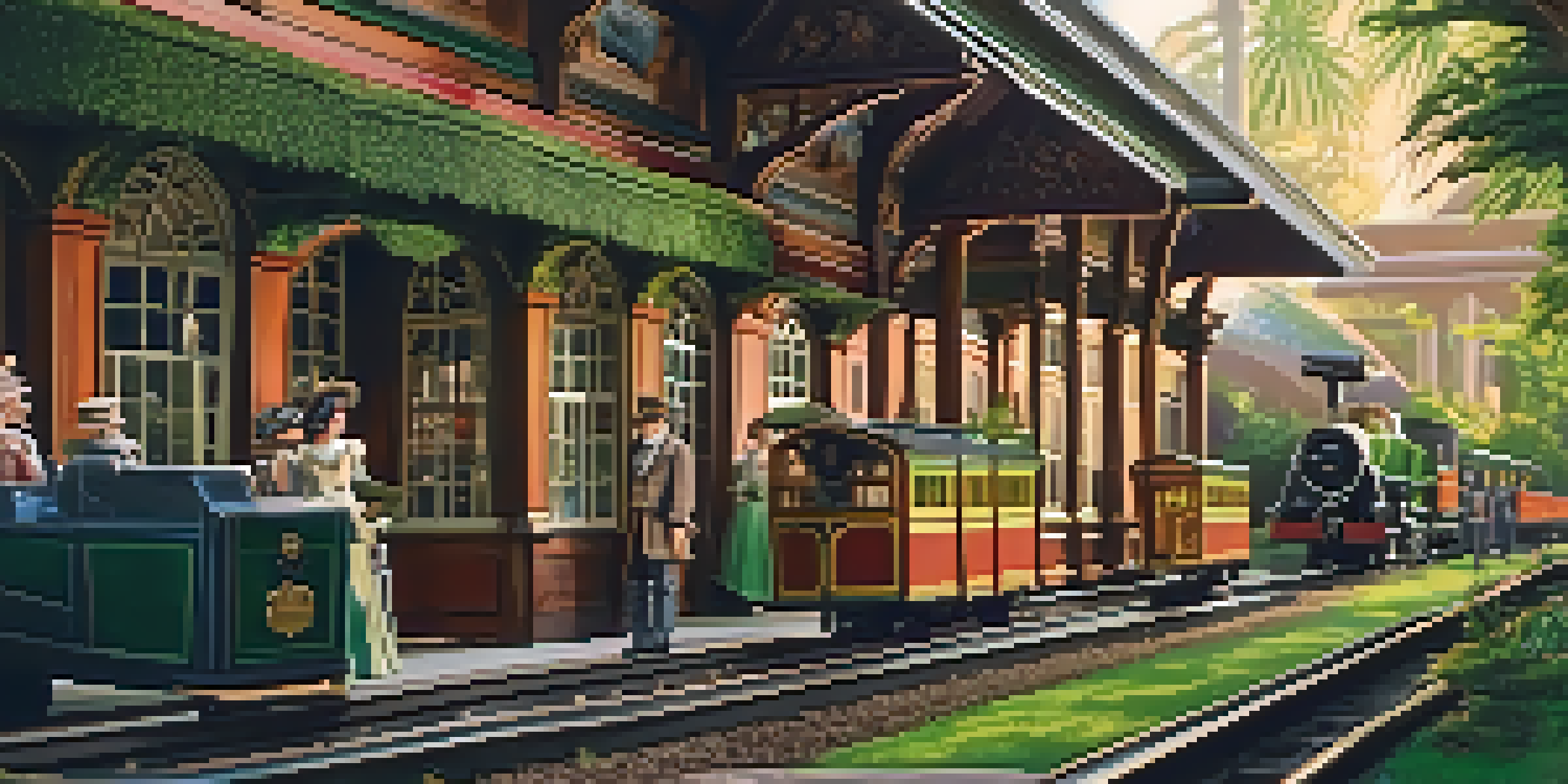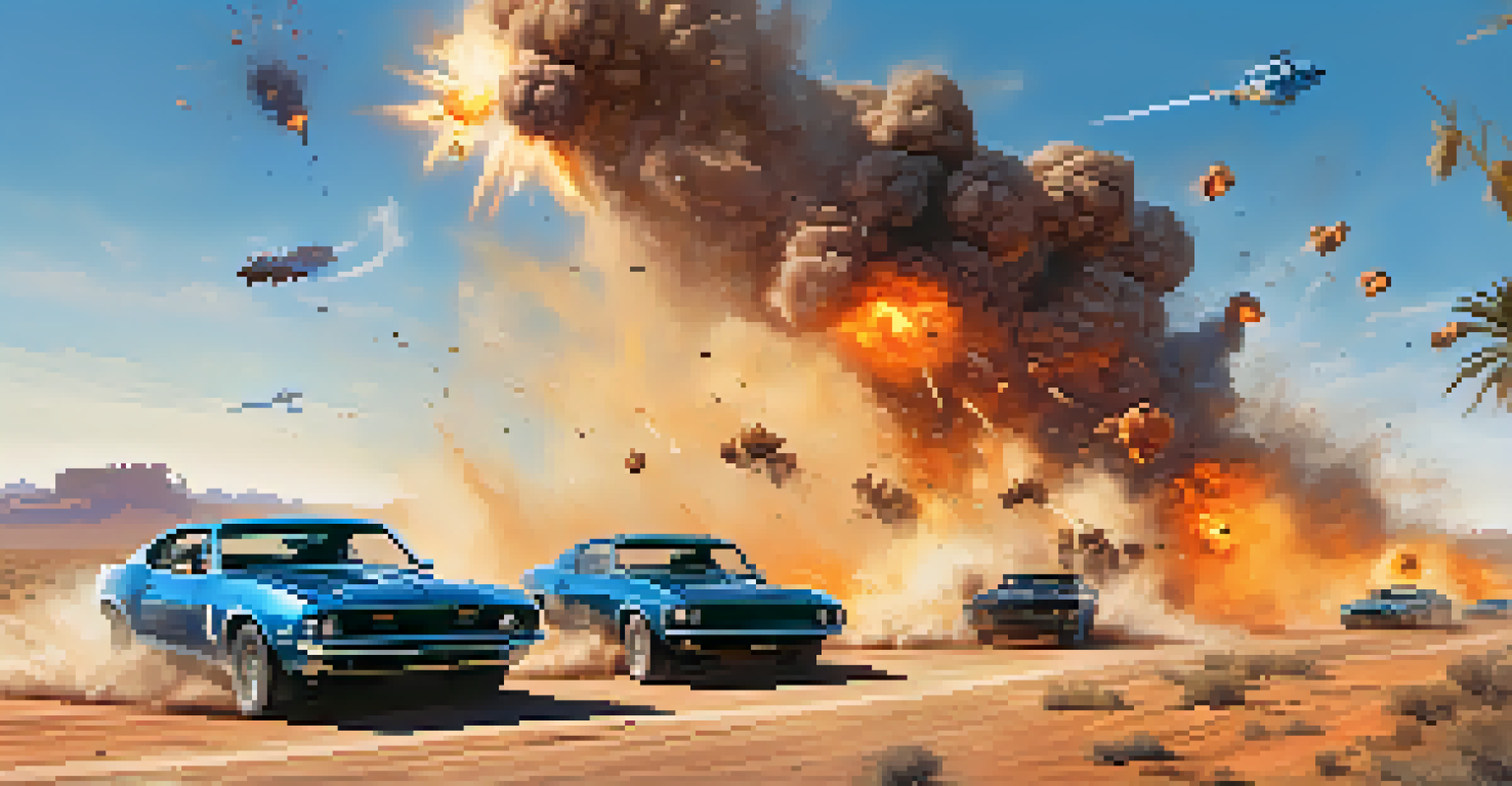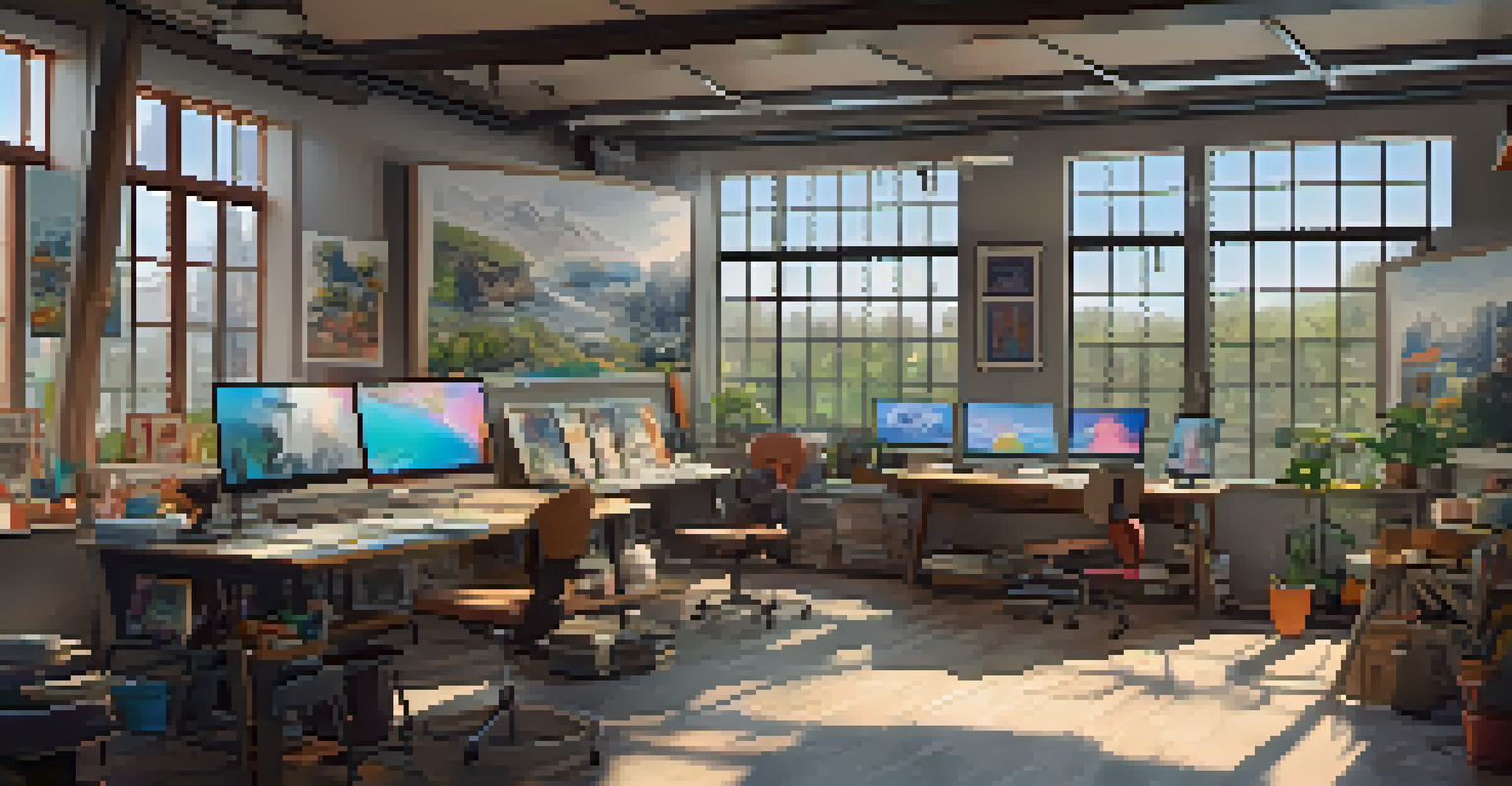From Practical to Digital: Special Effects Evolution Explained

The Birth of Practical Effects in Cinema
In the early days of film, special effects were all about ingenuity and manual craftsmanship. Techniques like stop-motion animation, miniatures, and practical explosions brought stories to life in ways that captivated audiences. For example, the use of model trains and physical sets in classic films created a sense of realism that was groundbreaking for its time.
Special effects are a big part of filmmaking. They can bring to life the most fantastical ideas and concepts, turning imagination into reality.
As filmmakers pushed the boundaries of creativity, practical effects became more sophisticated. Artists began experimenting with new materials and techniques, leading to iconic moments such as the animatronics in 'Jurassic Park.' These tangible effects not only dazzled audiences but also set a standard for authenticity in storytelling.
However, practical effects had their limitations, especially when it came to depicting fantastical elements. The need for innovation led to a shift in focus, paving the way for the rise of digital effects, which promised even more possibilities for visual storytelling.
The Advent of Digital Effects
The late 20th century marked a turning point with the advent of digital effects. Films like 'Star Wars: Episode I – The Phantom Menace' showcased groundbreaking CGI that expanded the horizons of what filmmakers could achieve. This technology allowed for the creation of entire worlds, characters, and creatures that were impossible to create practically.

Digital effects offered more flexibility and control in post-production, allowing for seamless integration with live-action footage. This meant that filmmakers could enhance scenes without the constraints of physical effects, leading to more dynamic storytelling. As a result, movies began to feature increasingly complex visual spectacles.
Practical Effects Revolutionized Film
Early filmmakers used practical effects to create immersive worlds, setting a new standard for cinematic storytelling.
However, the shift to digital didn't come without challenges. Some critics argued that over-reliance on CGI could detract from the emotional impact of a scene, as audiences became aware of the artificiality. This sparked a debate on finding the right balance between practical and digital effects in filmmaking.
The Blending of Practical and Digital Techniques
As technology evolved, filmmakers found a way to blend practical and digital effects seamlessly. This hybrid approach combined the best of both worlds, enhancing realism while still providing the creative freedom offered by CGI. Movies like 'Mad Max: Fury Road' effectively used practical stunts and sets alongside digital enhancements to create a visceral experience.
The best visual effects are the ones that you don't even notice. They should serve the story, not distract from it.
This fusion not only helped maintain the authenticity of practical effects but also allowed for more ambitious scenes that would have been difficult to execute otherwise. For instance, incorporating digital elements into large-scale action sequences made it possible to achieve breathtaking visuals without sacrificing the tangible feel of practical effects.
Today, many filmmakers advocate for this balanced approach, believing it creates a richer viewing experience. It ultimately honors the craft of practical effects while harnessing the possibilities that digital technology offers.
The Role of Animation in the Evolution of Effects
Animation has played a pivotal role in the evolution of special effects, bridging the gap between practical and digital realms. Traditional hand-drawn animation laid the groundwork for storytelling in a way that allowed for limitless creativity. Films like 'Snow White and the Seven Dwarfs' demonstrated how animation could enchant audiences and set the stage for future innovations.
With the rise of computer-generated imagery (CGI), animation transformed from a niche technique to a dominant force in filmmaking. Movies like 'Toy Story' showcased the potential of 3D animation, proving that animated characters could resonate with audiences just as much as live-action ones. This shift opened up new avenues for visual effects, elevating animated films to new heights.
Digital Effects Expanded Creativity
The introduction of digital effects allowed filmmakers to explore limitless possibilities, enhancing the visual storytelling experience.
Today, animated effects are often integrated into live-action films, creating a unique blend of storytelling techniques. This evolution highlights the versatility of animation and its enduring impact on the special effects landscape.
The Impact of Technology on Special Effects
Technological advancements have continuously reshaped the landscape of special effects. From practical tools like matte paintings and puppetry to sophisticated software like Adobe After Effects and Blender, the tools available to artists have transformed dramatically. This evolution has enabled filmmakers to push creative boundaries and experiment with new visual styles.
The introduction of motion capture technology has revolutionized the way characters are brought to life on screen. By capturing an actor's movements and translating them into digital characters, filmmakers can create performances that feel authentic and relatable. This technique has been used in films like 'Avatar,' where the combination of motion capture and CGI created an immersive world.
Furthermore, the rise of virtual reality (VR) and augmented reality (AR) is opening new avenues for special effects in storytelling. These technologies allow audiences to engage with content in interactive ways, changing the conventional experience of watching a film.
The Future of Special Effects: Trends to Watch
As we look to the future, the landscape of special effects is poised for even more innovation. Trends such as real-time rendering and AI-generated effects are set to revolutionize the way visual storytelling is approached. Real-time rendering allows effects to be visualized instantly, making it easier for filmmakers to make decisions on set.
AI technology is also beginning to play a role in creating effects, enabling artists to automate certain tasks and enhance their creativity. This can lead to more efficient workflows and the ability to explore ideas that may have been previously unattainable. Imagine a world where effects can adapt in real-time to audience reactions!
Hybrid Techniques Enhance Authenticity
The blending of practical and digital effects creates a richer viewing experience, honoring the craftsmanship of both methods.
However, with these advancements come ethical considerations. As technology blurs the lines between reality and fiction, discussions about the authenticity of visual effects and their impact on storytelling will become increasingly important. Filmmakers will need to navigate these challenges while continuing to innovate.
The Lasting Legacy of Special Effects in Storytelling
The evolution of special effects has left an indelible mark on the art of storytelling. From the practical effects of yesteryears to the digital innovations of today, these techniques have enriched the cinematic experience, allowing filmmakers to convey complex narratives and emotions. The magic of film lies in its ability to transport audiences to different worlds, and special effects are a crucial component of that journey.
As audiences have become more sophisticated, so too have their expectations for visual storytelling. Special effects are no longer just about spectacle; they are integral to character development and plot progression. Films that masterfully blend effects with narrative elements often resonate more deeply with viewers.

Ultimately, the legacy of special effects is one of creativity and innovation. As filmmakers continue to explore new frontiers, the evolution of effects will undoubtedly shape the future of storytelling for generations to come.